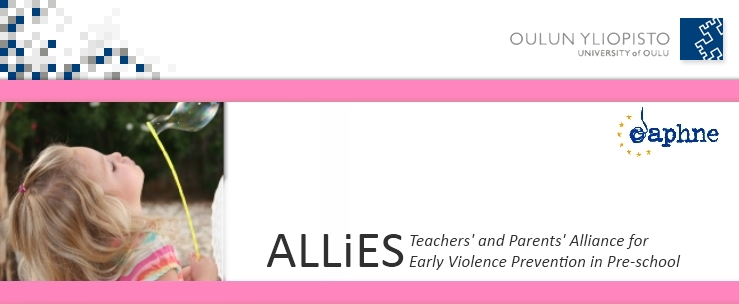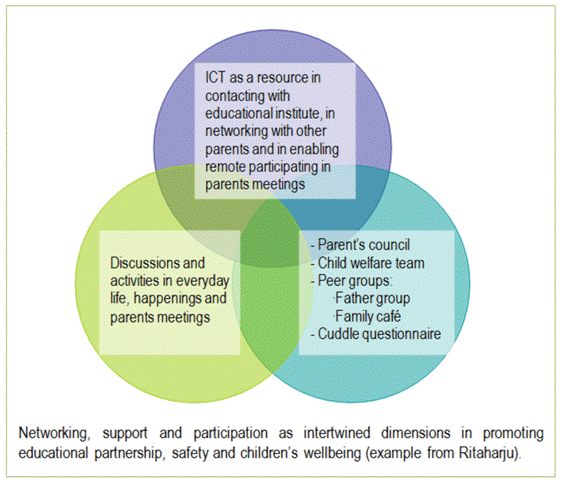
 Parent - School Cooperation The aim of cooperation between preschool and families is to foster a permanent, active community culture between parents and school, based on equality, safety, caring, justice and respectful communication. Moreover, networking of parents, participation of parents and interaction between preschool and parents are factors to be considered in collaboration with the students’ homes. The following figure illustrates the dimensions of networking, support and participation as intertwined factors in promoting educational partnership, safety and children’s wellbeing.
These three factors are crucial in promoting educational partnership with parents and in creating a safe community where children’s wellbeing is at the core of all action. Educational partnership as well as networking, support for parenthood and participation are important from the point of view of children’s safety and violence prevention for the following reasons:
In practise networking takes place in discussions and activities in everyday life, at various events and in parents’ meetings (group meetings and via the Internet). The parents’ council can use the promotion of communality among children, parents and staff as a starting point for its action plan, as has been done in Ritaharju, for instance. The parents’ council wants to support homeschool/daycare cooperation and educational partnership from the viewpoint of communality. This promotes wellbeing and safety of children and the whole community. To establish measures to prevent violence, it is important to involve the professionals and parents in discussion on the topic and on ideas to develop this work. For instance, the Parents‘ Newsletters about the periods introduced in the “Classroom practices“ link helps school staff and homes to teach children alternative, positive behaviour both in preschool and at home. Children are encouraged to play an active role within the school community, as well as in creating a shared solid agreement of the community in preventing violence: clarity and fairness of the rules is important as well as a shared vision of the rules amongst adults. The three screening tools for recognising violence are tools for supporting collaboration with homes. One of the tools is for teachers (Smiley), one for parents (Cuddle) and child, and one for the school nurse. The instruments have been designed to recognise overt and subtle gendered and other violence, mistreatment and bullying. If a reason arises to get worried about the wellbeing and safety of a child, the issue is taken to the home in order to solve the problem. |
Cooperation (pdf)
|
|
|
